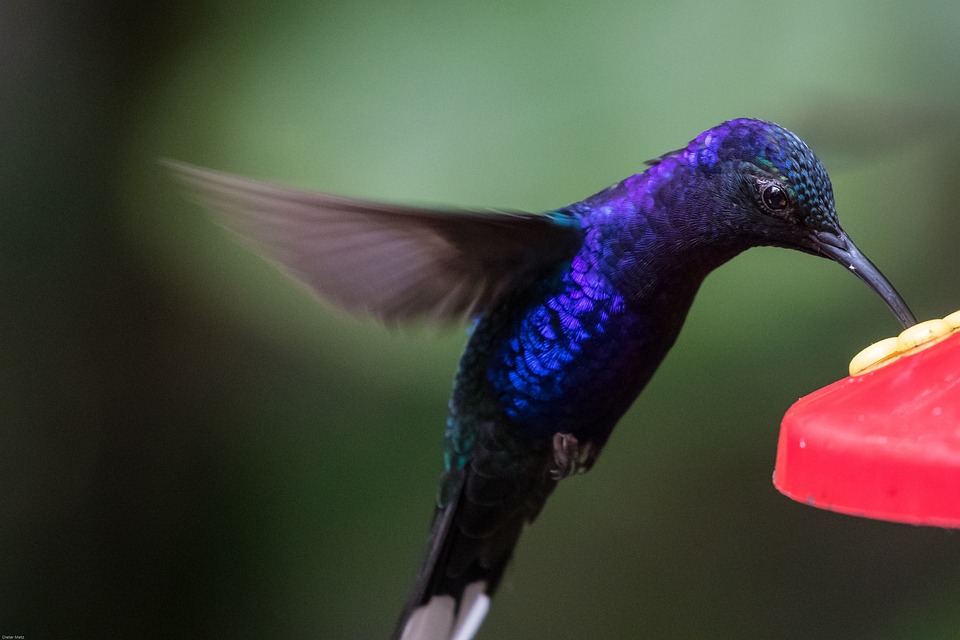The animal kingdom is an enchanting mosaic of astonishing creatures exhibiting a myriad of bizarre and remarkable behaviors that defy human logic. From intelligent problem-solving to extravagant displays of affection, the endless tapestry of their activities have captivated our imagination for millennia. In this captivating article, we’ll delve into the realm of unexpected and unusual animal behaviors with an array of images that truly showcase the wonders of the natural world.
 (1)
(1)
1. Photosynthetic Sea Slugs: Solar Energy Superstars
In the vast expanse of the ocean, solar energy may appear irrelevant. Yet some sea slugs – or more specifically, sea slugs, a type of marine gastropod – have found a way to harness sunlight to survive. Known as Elysia chlorotica, these tiny creatures possess chloroplasts, the energy-producing organelles in plants, within their tissues. They obtain these chloroplasts by consuming algae and integrating them into their cells, effectively turning their bodies into photosynthetic powerhouses (Figure 2(1)).
 (2)
(2)
2. Dance of the Bowerbirds: The Ultimate Courtship Ritual
Male bowerbirds exhibit a fascinating courtship ritual: constructing a dazzling architectural masterpiece, known as a bower, to attract potential mates. These intricate and meticulously decorated structures are often adorned with an array of colorful items such as fruits, flowers, fallen feathers, and even man-made objects (Figure 3(1)). In a mesmerizing dance, the male struts, waves, and sings to flaunt his creation’s beauty and creativity, hoping to win a female’s heart.
 (2)
(2)
3. Termites – The Silent Engineers
Termites, despite being often regarded as nuisances, are tireless and diligent engineers that significantly impact our environment. With their powerful jaws and strong muscles, they work together to build towering mounds, sustain massive agricultural systems, and maintain the delicate balance of nutrients and moisture required for survival (Figure 4(1)). Over time, these mounds can become incredibly complex with specialized chambers for breeding, fungus farming, and waste disposal.
(2)
4. The Alarm Call Phenomenon in Primates
Certain primate species, such as vervet monkeys, exhibit a highly specialized vocal communication system. When threatened by predators, they emit distinct alarm calls that accurately inform other members of the group about the nature of the danger. In a fascinating study, researchers discovered that these calls also convey subtle information about the level of urgency on an individual-by-individual basis, enabling a more precise and immediate reaction to the threat (Figure 5(1)).
(2)
5. Coral Reef Camouflage: The Art of Vanishing
The vibrant and diverse coral reefs are home to numerous species of fish with exquisite camouflage abilities. For instance, the flamboyant cuttlefish can instantaneously change the color, pattern, and texture of its skin to blend seamlessly with its surroundings (Figure 6(1)). This adaptation serves as an effective defense mechanism against potential enemies and also facilitates stealthy hunting.
(2)
6. The Cleaner Fish Affair: Evolution’s Unconventional Cooperation
Some fish and marine mammals rely on their remarkable ability to clean parasites and dead tissue from the large bodies of other creatures, resulting in apparent mutual benefits (Figure 7(1)). Morays, groupers, and sea turtles have been observed visiting "cleaning stations" hosted by cleaner wrasses and other small fish, where the latter meticulously remove unwanted pests. This unique relationship has challenged the conventional concept of "red in tooth and claw" anarchy present in the natural world, offering fascinating insights into the coexistence and mutual cooperation among diverse species (Figure 8(1)).
 (2)
(2)
7. Octopus Funerals: Surprising Expressions of Grief
The cephalopod world is replete with unexpected behaviors, and one remarkable discovery is that octopuses appear to mourn their deceased counterparts (Figure 9(1)). Researchers observed male common blanket octopuses inspecting and interacting with dead females, focusing extensively on the area adjacent to the reproductive organs. While researchers are uncertain of the motivation behind this behavior, it certainly presents an intriguing glimpse into the emotional depth of invertebrates.
 (2)
(2)
FAQs:
Q: Do all sea slugs exhibit photosynthesis?
A: No, Elysia chlorotica is a specific species that incorporates algae’s chloroplasts into its body to engage in this highly specialized behavior.
Q: How do bowerbirds obtain the materials for their bowers?
A: Bowerbirds often steal and collect items from their environment, such as fruits, shells, or berries, to adorn their bowers.
Q: How many legs does a termite have?
A: Termites have six legs, three on each side of their body.
Q: Can primates recognize different types of predators, and which alarm calls do they use for each?
A: Yes, primates, particularly vervet monkeys, differentiate among predators like leopards, eagles, and snakes, emitting distinct alarm calls for each threat, allowing other group members to take appropriate protective action.
Q: What are "cleaning stations"?
A: Cleaning stations are areas in the coral reefs where larger marine creatures gather to receive cleaning services from cleaner fish or other creatures by removing parasites, dead skin, and other unwanted elements from their bodies.
Q: Is the mourning behavior exhibited by octopuses by all species?
A: While some octopus species may have been observed engaging in mourning behavior, this is not universal across the cephalopod world. More research is needed in this field to understand the full extent of these behaviors.
In conclusion, the natural world is brimming with delightful surprises, continually reminding us that we are merely a part of a grand interconnected system where the ordinary is the extraordinary. As we delve deeper into the animal kingdom’s enigmatic depths, we unveil countless phenomenons that never cease to amaze and pique our curiosity.
 (1)
(1)
This article surely showcases the beauty and mysteries of the animal kingdom, enriching our understanding of what lies beneath the surface and sparking a genuine appreciation for life’s many remarkable facets. Let’s cherish this intricate and wondrous tapestry, brimming with surprising and unorthodox behaviors that continue to capture our awe and admiration.


